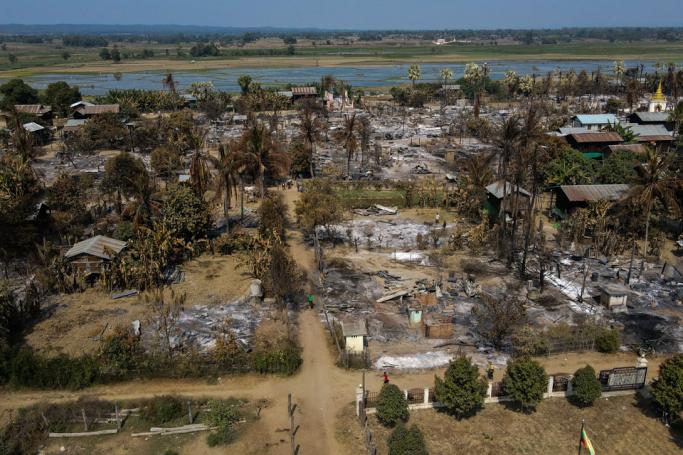Journalist Thu Kha has to take care as he dodges bullets in the conflict-ridden Sagaing region.
Thu Kha (a pseudonym) is an enthusiastic reporter interested in journalism who covers the fighting and news in a region that has made the headlines over the last year.
As a freelance journalist in the reporting field, hunting for news is difficult. Since the coup, Thu Kha’s job has become harder, largely because Sagaing is a region where local defense forces and armed resistance are strong.
Moreover, the military junta has blocked internet access in Sagaing Region for a long time. Given the heavy fighting, the junta is focused on blocking the flow of information in the region.
Unlike other townships in Myanmar, internet access is cut off frequently in the area and it has made reporting difficult. Because internet access is irregular, Thu Kha has to find a location with good internet connection in order to send in his reports. This poses a problem. It is not safe to travel from place to place. He runs into checkposts when he travels.
The biggest struggle for freelance reporters like Thu Kha is not having a journalist identification card to prove he is a reporter, he explains. When he cannot show a journalist identification card, the news-sources sometimes did not trust him and he is looked down upon.
“Since the time of the previous civilian government, it was hard to be a reporter without a journalist identification card. When I go to a place where I am not known, I, a journalist, get inspected and asked questions [because the sources did not trust him],” he says.
After the coup occurred, when I could not go to the sources in person in some cases, they wanted to see the journalist identification card first for trust. The problem starts there,” Thu Kha notes. “During the time of the anti-junta movement, freelance journalists are losing their jobs more than non-freelance journalists.”
Additionally, he cannot stay in one place and has to hide in different locations for security reasons. As a freelance journalist, a news agency cannot offer him security, he alone has to keep himself from danger.
And a crucial challenge is the potential threat to life and limb when he travels with local defence forces and reports on the fighting, he stresses.
Since the junta is frequently launching air strikes in Sagaing Region, he said he frequently had to face dangerous situations.
The statistics show the hard truth about the dangers in Sagaing. Within eight months from 1 July 2021 to 20 March 2022, there were about 768 skirmishes between junta troops and local defense forces, according to the Institute for Strategy and Policy-Myanmar.
Since the military coup in February 2021, freedom of the press has been lost in Myanmar. When resistance groups began fighting back, the oppression ratcheted up.
Thu Kha calls Sagaing home. But it is a tough spot to report from.












